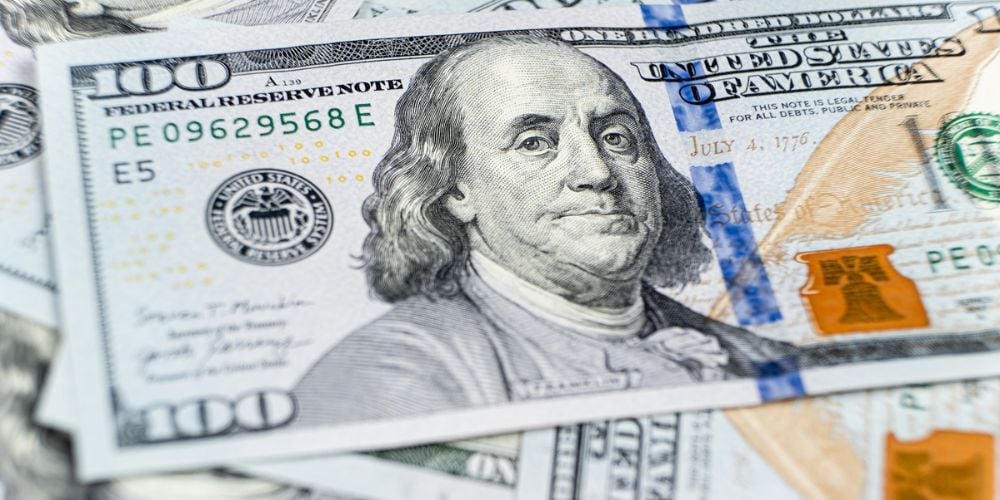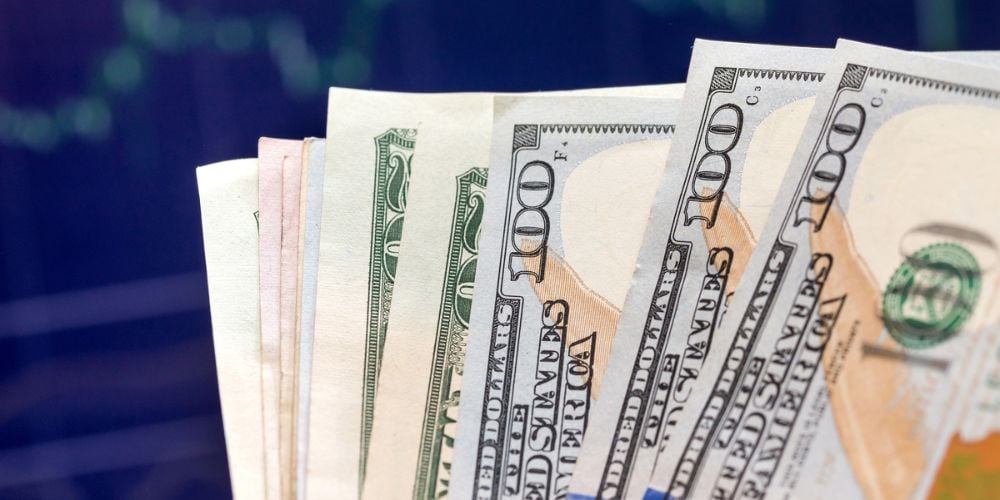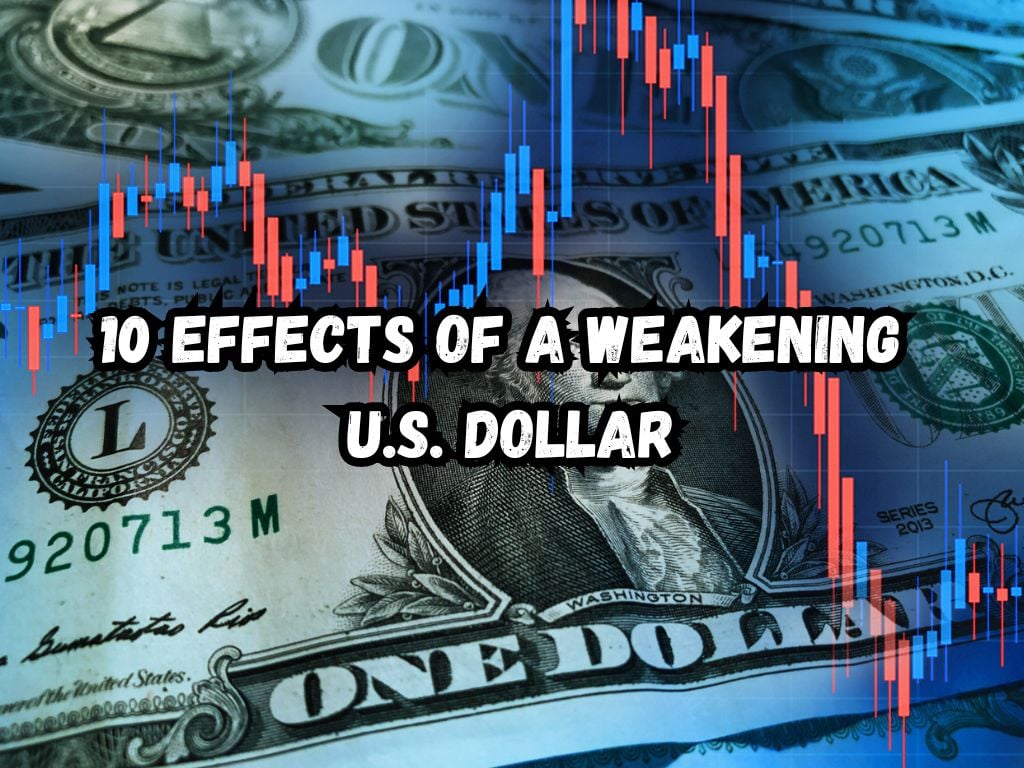In the intricate dance of global finance, the U.S. dollar holds center stage, influencing economic scenarios far beyond its borders.
When the dollar diminishes in value compared to other currencies, the repercussions echo through various economic sectors, nationally and internationally.
This article delves into the 10 effects of a weakening US Dollar, offering insights into how it shapes economies, industries, and individual financial well-being.
10 Effects of a Weakening U.S. Dollar
The Global Purchasing Power Shift
A Dual-Edged Sword
The flipside of a declining dollar is a complex panorama. Internationally, a weaker dollar enhances the purchasing power of foreign entities, allowing them to buy more with less. This scenario uplifts economies where the dollar’s strength is a costly affair.
Domestically, it paints a starkly different picture. The cost of imports surges, escalating prices for consumers and squeezing profit margins for businesses reliant on foreign goods.
The Cost of Living and Business Operations
As the dollar’s value drops, an immediate effect felt by Americans is on the price of everyday items. A cascading effect takes hold as higher import prices push up the cost of living and operating.
For businesses relying on imported raw materials or goods, this means reevaluating pricing strategies and possibly facing tighter profit margins.

Boosting U.S. Exports
Short-term Gains vs. Long-term Strategy
A notable advantage of a weakening dollar is the competitive edge it offers to U.S. exporters. Goods priced in dollars become cheaper for foreign buyers, potentially boosting demand and spurring economic growth in export-oriented sectors.
Yet, reliance on this advantage is risky. Market dynamics are ever-changing, and a strategy focused solely on benefiting from currency devaluation might not be sustainable in the long run.
Commodity Prices on the Rise
The Dollar-Commodity Connection
The weakening of the dollar stands as a key driver behind increasing commodity prices. Given commodities are globally traded in dollars, a drop in the currency’s value inflates the price of oil, gold, and other commodities.
This has far-reaching impacts, from the gas pump to the manufacturing sector, influencing both consumer expenses and industrial costs.
Inflationary Pressures Mount
The Inflation Cascade
Increased import costs and pricier commodities set the stage for higher inflation. This development erodes purchasing power, compelling consumers to tighten their belts.
It places the Federal Reserve in a tricky position, as it navigates the fine line between stimulating economic growth and keeping inflation in check.
Foreign Investment Floodgates Open
U.S. Assets in Global Eyes
The depreciating dollar spells opportunity for foreign investors. Real estate, stocks, bonds, and other U.S. assets become relatively cheaper, attracting international capital.
While this boosts certain sectors, it prompts a nuanced dialogue about foreign ownership and economic sovereignty.
Debt, Interest Rates, and Economic Balancing Acts
A Delicate Equilibrium
The U.S.’s hefty debt obligations come under strain as the dollar weakens, particularly if this debt is owned by foreign entities.
Adjusting interest rates emerges as a tool for the Federal Reserve to manage this scenario, aiming to curb inflation and stabilize the dollar.
Yet, such adjustments carry their own set of challenges, impacting borrowing, spending, and overall economic growth.
Tourism and Travel: A Brighter Horizon
The Tourist Magnet Effect
For international tourists, a weakened dollar transforms the U.S. into a more alluring destination. Their stronger currencies fetch more value, benefiting the U.S. tourism sector.
This influx not only generates revenue but also potentially creates a range of jobs in hospitality and related industries.
The Stock Market’s Uneven Terrain
Sector-Specific Responses
In the stock market, the reaction to a weak dollar is anything but uniform.
Companies in the exporting arena might celebrate stock price hikes, while import-dependent sectors grapple with challenges. Investors need a keen understanding of these dynamics to navigate this uneven terrain.

Real Estate Dynamics Shift
Foreign Investment Pull
A softening dollar makes U.S. real estate more appealing to foreign investors. This demand can inflate property prices, altering housing market dynamics.
While some may benefit from these shifts, concerns about affordability and community impact surface.
The Geopolitical Trade Puzzle
Adjusting the Pieces
Trade policies and international agreements may undergo revisions in the wake of a weakening dollar.
Nations seek to protect their economic interests, potentially reshaping trade relations and global economic patterns.
The Profitability Conundrum
While multinational corporations might enjoy increased foreign earnings in the short term, the varying operational costs across countries due to fluctuating exchange rates pose a conundrum. Balancing these factors is crucial for sustaining profitability.
Strategic Moves in a Volatile Currency Landscape
Understanding and adapting to currency movements is indispensable for businesses and investors alike.
Employing currency hedging strategies and staying abreast of exchange rate fluctuations can offer a competitive advantage, aiding in making proactive financial decisions.
Frequently Asked Questions
What drives the U.S. dollar’s depreciation?
The weakening of the U.S. dollar can result from various factors, including trade deficits, high national debt, and monetary policies.
How does a weakening U.S. dollar affect ordinary Americans?
A weaker dollar can lead to higher prices for imported goods and contribute to inflation, affecting the cost of living. However, it can also benefit export industries and create job opportunities.
Can a weak U.S. dollar be beneficial for the economy?
Yes, under certain conditions. It can enhance export competitiveness and attract foreign investment, stimulating economic growth.
What measures can the Federal Reserve take to strengthen the dollar?
The Federal Reserve may adjust interest rates and implement policies aimed at controlling inflation and attracting investment to the dollar.
How can investors protect against a weakening U.S. dollar?
Investors might consider diversifying their portfolio with assets that tend to perform well when the dollar is weak, such as commodities or foreign equities. Currency hedging strategies can also mitigate risks associated with dollar fluctuations.
Conclusion
Navigating the complexities of a weakening U.S. dollar requires a multifaceted approach, considering its broad-ranging impacts on the economy, industries, and daily life.
By understanding these dynamics, consumers, businesses, and policymakers can better position themselves to respond to these challenges and opportunities.


 Tags:
Tags:










